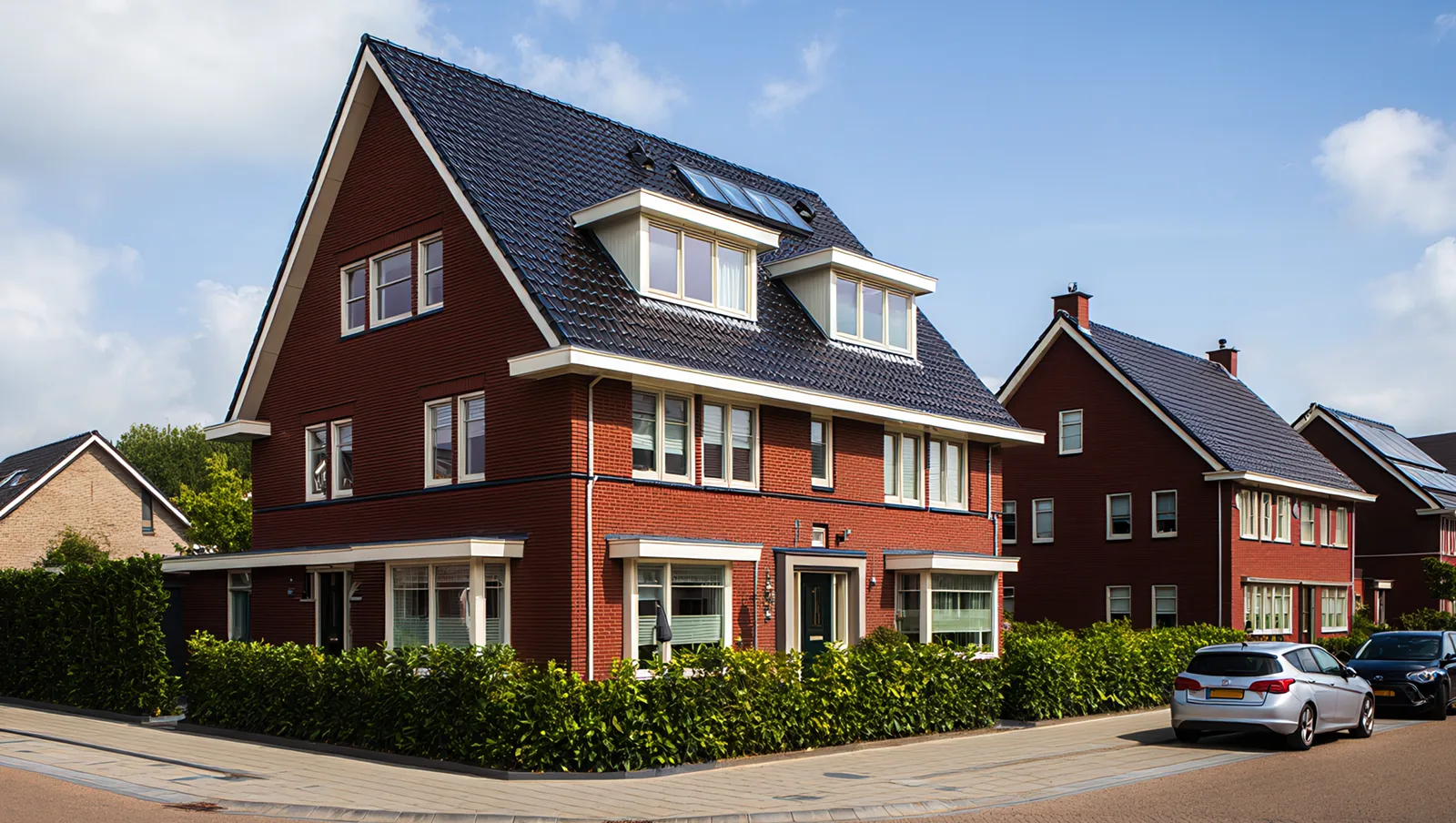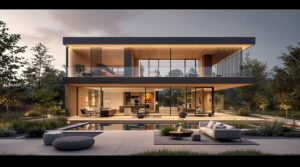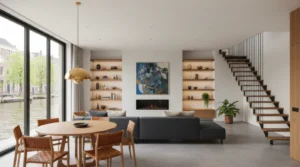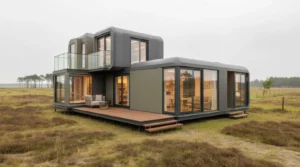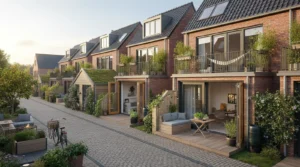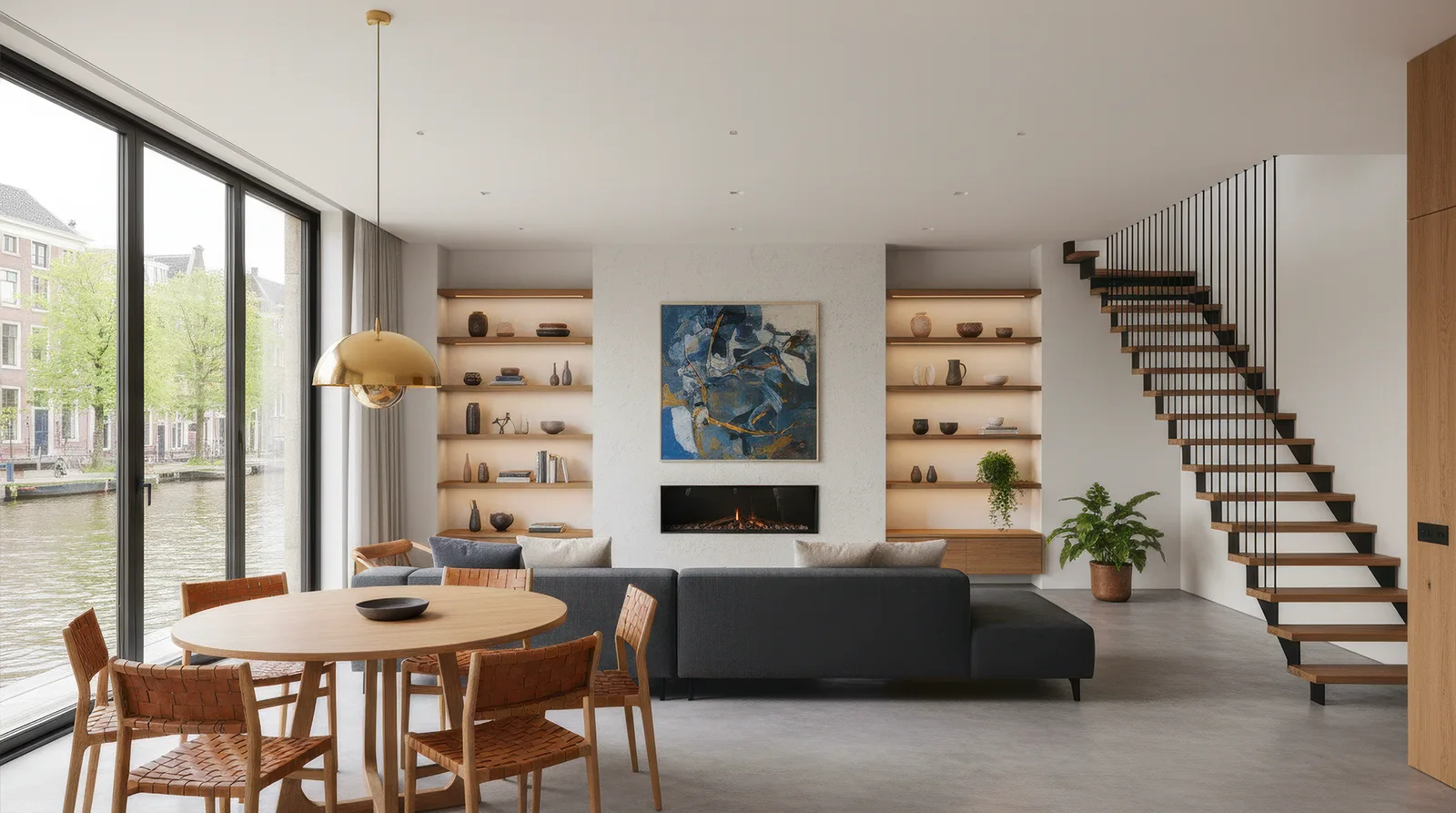Types of Roofing Materials for Extensions: Pros and Cons
If you are planning a new building or renovation, you may be wondering about the types of roofing materials and which ones to choose. The market and contractors offer a variety of options, and it is easy to get lost among them.
On the Dutch market, you can find roofing materials suitable for extensions to residential buildings. Contractors often offer ceramic tiles (a traditional choice that emphasizes the architecture of most buildings in the Netherlands), concrete tiles (a more affordable alternative to ceramics and resistant to strong storm winds), natural slate (a premium material with excellent waterproofing and a long service life), metal tiles and standing seam roofing, as well as EPDM or bitumen.
We have collected all our positive experiences working with houses in the Netherlands, and today, we will share valuable knowledge for your new project.
Why Choosing the Right Roofing Material Matters
Your country’s climate can sometimes challenge builders. However, there is always a solution for flat roofing materials and similar structures.
The climate in the Netherlands has the following characteristics:
- Maritime temperate type.
- It rains often.
- High humidity.
Strong winds are often encountered, especially on the coast. The wrong material can lead to leaks, rapid wear of parts or the whole building, or even damage to the structure during a storm.
The right choice of flat and pitched roofing materials affects the following:
- Moisture protection. The Netherlands has more than 200 rainy days a year, which is critical in construction matters.
- Energy efficiency. A well-built extension or roof modernization reduces heat loss in winter and overheating from bright rays in summer.
- House durability. Durable types of roofing materials reduce repair costs.
- Aesthetics. Any element of the house should be in harmony with the facade and architecture of the entire area. When planning, read the strict building codes in the Netherlands.
Thus, you are probably convinced that selecting the right components, considering the challenging climate of the Netherlands, is simply a matter of experience. Now you know the importantness of the process of choosing parts and materials.
Key Factors When Selecting Roofing for Extensions
Renovation company specialists will always help and advise those brands they have already dealt with. Often these are manufacturers of high-quality wood, metal, etc., that have proven themselves in practice. However, it would not hurt to understand the issue yourself briefly. So, let’s consider all the key factors that directly affect your new project’s success and its future durability.
Climate and Weather Resistance
The Netherlands is characterized by strong gusty winds, active sun in summer, frequent rains, and high humidity in other periods.
The material you use for the roof or extension must withstand constant precipitation, temperature changes, and storm winds. A good example would be ceramic and concrete tiles, which are excellent at resisting moisture. They have also proven themselves well for flat roofs, where the tightness of the seams is essential.
Weight and Structure Compatibility
The architect always starts from what is already there. Some buildings have a strong and reinforced foundation that will withstand an entire superstructure on the roof. Others do not have such advantages, and you must approach the task flexibly.
Lightweight flat roof materials such as metal or bitumen membranes are ideal for extensions with a lightweight frame. Heavy ones are for buildings with a firm or reinforced foundation and rafter system. Only a specialist can prepare an answer based on the house plan and detailed information. To realize your dream, you will need some small renovation services that will allow you to recreate precisely the project you want.
Cost, Longevity, and Maintenance
Cheap pitched roofing materials do not always mean bad. Although one type of material is cheaper than the other, you need to contact a specialist who will work within your budget and help you implement a quality project.
There are those moments when a good contractor can advise you. Here are a few of them:
- EPDM and metal are cheaper to install, but require periodic inspection.
- Slate and tiles are more expensive, but serve for decades without major repairs.
You can find different pricing policies and brands even within the same assortment. However, you should not immediately choose the cheapest one. After all, you do not want to spend money on repairs every time and incur significant financial costs.
Best Flat Roof Materials for Extensions
Modern Dutch extensions often have a similar type of roof, especially in cities with buildings that value minimalist design and space-saving.
We suggest considering the most popular types of flat roof materials and learning their features:
- EPDM. In other words, it is synthetic rubber. Pros: high water resistance due to the strength of the material, withstands various temperature changes from -40 ° C to + 120 ° C, lasts for a long time, 40-50 years, resistant to UV radiation and salt in the air, which is essential on the coast of the Netherlands. There are only a couple of cons: it requires professional installation and has a higher price compared to bitumen.
- GRP, also called fiberglass. It has the following advantages: seamless structure, resistance to corrosion and moss, ideal for the humid climate of the Netherlands, and light weight. Among the disadvantages are factors such as lower elasticity in severe frosts and the need for repairs from a specialist in case of damage.
- Bitumen membrane (roofing felt). A worthy type of roofing material with the following advantages: affordable price, proven technology, and easy repair. Among the disadvantages is a slightly shorter service life (usually 15-20 years), which can crack during sudden cold snaps.
- Green roof. This spectacular design option will appeal to all lovers of nature and environmental issues. Pros include improved thermal insulation, reduced load on the storm system, and good noise absorption. However, there are also disadvantages, such as the high cost of installation, purchase, and maintenance, and the requirement of a solid foundation for installation.
As you can see, there are many options for your idea. You can fully realize your dream in different styles and preferences.
Best Pitched Roof Materials for Extensions
Houses with such shapes have a special romance. Sometimes, they can even resemble buildings from novels or fairy tales.
In small towns and rural areas of the Netherlands, extensions often have pitched roofs to harmonize with the region’s main style.
If you decide on a similar look for your home, then choose good pitched roof materials correctly:
- Ceramic tiles are a stunningly beautiful option with their charm. Today, the market offers different styles and colors to satisfy the tastes of all buyers. The advantages are durability, resistance to moisture and storms, and suitability for restoration in historic areas. The disadvantages are high price and heavy weight, requiring a solid base.
- Concrete tiles are also a popular option. The advantages we will highlight are a more affordable price compared to ceramics, resistance to wind and rain, and ease of repair and replacement of individual elements. Among the disadvantages are fading in the sun and a slightly shorter service life.
- Natural slate is an eco-friendly option among pitched roofing materials for fans of natural products. Its advantages include a premium look, incredible durability up to 100 years, and 100% waterproofing. The disadvantages we will highlight are the high price and weight, and installation requires qualified specialists and experienced craftsmen.
- Metal roofing. Variations include folded or metal tiles. Advantages include lightness, corrosion resistance (with modern coatings), and quick installation. Disadvantages include noise during rain and hail, and condensation is possible with poor ventilation, but this can be easily avoided.
You can choose the option that best suits your needs and location. The variety is so great that you can enjoy the choice of color, texture, and much more.
Sustainability and Energy Efficiency of Roofing Options
In the Netherlands, the issue of sustainable construction is particularly important. The state stimulates the use of environmentally friendly materials and technologies in construction, so the demand for such roofing materials is growing.
In this issue of sustainability, the following types of pitched and flat roof materials have proven themselves best:
- Ceramic and concrete tiles. They can be recycled afterward, and high heat capacity reduces temperature differences inside the room.
- EPDM and GRP. They are durable and reduce the amount of construction waste. However, their production requires energy costs.
- Green roofs are a spectacular option that improves the microclimate, filters rainwater, and, most importantly, increases biodiversity.
- Metal roofing. Such pitched roof materials are recyclable and can be combined with solar panels.
One important factor is reducing energy costs and money spent on heating and air conditioning bills. Correctly selected types of roofing materials allow a house to reduce its energy consumption by as much as 10-20%. This is especially important in the current situation of rising electricity prices in the Netherlands.
Roofing Material Comparison Table: Pros and Cons
To systematize the information received, we have prepared a single table with collected material and brief theses. We hope that this form will allow you to access all the data quickly and conveniently.
| Material | Pros | Cons | Durability* | Cost** |
| EPDM | Durable, UV and salt resistant, low maintenance | Expensive installation | 40–50 years | Medium/high |
| GRP | Lightweight, seamless, corrosion resistant | Fragility in frost, difficult repair | 25–30 years | Medium |
| Bitumen | Available, easy to repair | Cracks in cold weather, shorter service life | 15–20 years | Low |
| Green roof | Ecology, thermal insulation, sound absorption | Expensive installation, maintenance | 30–40 years | High |
| Ceramic tiles | Durability, weather resistance | Weight, high price | 70–100 years | High |
| Concrete tiles | Cheaper than ceramics, durable | Fades, slightly shorter service life | 50–60 years | Medium |
| Slate | Premium appearance, maximum durability | Price, weight, difficult installation | 80–100 years | Very high |
| Metal | Easy, quick installation, recyclable | Noise, condensation | 40–50 years | Medium |
* We have provided approximate values for the climate of the Netherlands.
** The cost is presented in comparison with other options.
Common Mistakes to Avoid
Some risks arise if you approach the issue illiterately or trust a specialist without experience. We have selected the TOP of the most common mistakes that you can easily avoid if you follow simple rules, as our trained architects and installers do:
- Ignoring the climate. Heavy rains and intense storms are common in the Netherlands. Pitched roof materials without reliable waterproofing quickly deteriorate and fail, requiring repair or complete replacement.
- Incorrect load calculation. The installation of heavy tiles on a light frame inevitably leads to the deformation of the structure and even the destruction of the building. Experienced architects and designers will help you calculate the weight and select the appropriate types of roofing materials.
- Saving on installation. Even the best and most expensive material will leak if it is improperly laid. Therefore, trust the issue only to a professional to avoid financial losses on subsequent repairs.
- Lack of ventilation—this is a point that not every homeowner knows about and thinks about. The absence or improper ventilation leads to condensation and premature coating wear. You may also experience dampness and mold, which multiplies especially quickly during the humid season in the Netherlands.
- Choice without taking into account architectural standards. In some areas of the Netherlands, there are strict requirements for roof appearance.
The company CBS Renovation offers long-lasting house extension options. We create projects in the Dutch climate that will ideally fit into the urban landscape and bring joy to the house’s residents.
CBS Renovation: Roofing Solutions from Experts in the Netherlands
Our company has been engaged in roofing work throughout the Netherlands for more than 15 years, offering a full range of services. We are independently involved in design and repair. Our specialists have experience working with traditional materials (tiles, slate) and more modern versions (EPDM, green roofs).
We pay special attention to the following points in our work:
- Taking into account weather conditions when choosing types of roofing materials.
- Energy efficiency and durability.
- Compliance with local building codes, obtaining the right to build, and other legislative issues.
- Neat integration of the roof of your new extension with the main building.
CBS Renovation guarantees the work and uses pitch and flat roof materials from certified suppliers. This is especially important in the Netherlands’ stormy climate.
Conclusion
Choosing types of roofing materials for an extension in the Netherlands is a well-thought-out balance between climate resistance in harsh conditions, aesthetics and budget.
With high humidity and strong winds, durable, strong, airtight, and energy-efficient solutions are especially valued. These solutions allow you to save on electricity and heating.
Flat roofs with EPDM or fashionable green covering are suitable for modern houses. Pitched roofs with tiles or exquisite slate are for traditional architecture in the classic Dutch style. Our specialist’s main advice is not to save on professional installation and to take into account the recommendations of professionals (architect and installer) so that the extension will last for decades without significant repairs.

